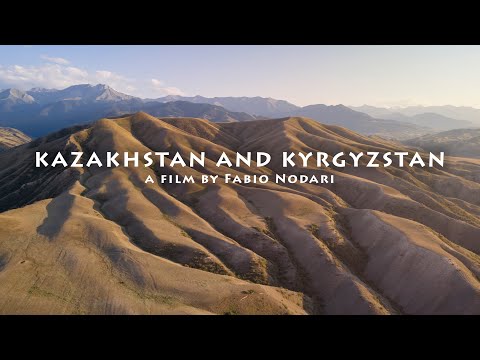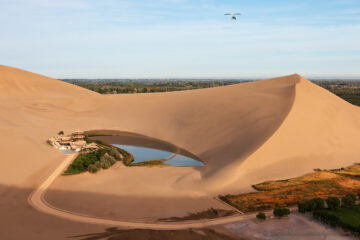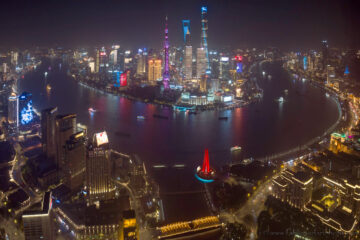Find out some of the most interesting things to do and see in Kyrgyzstan.
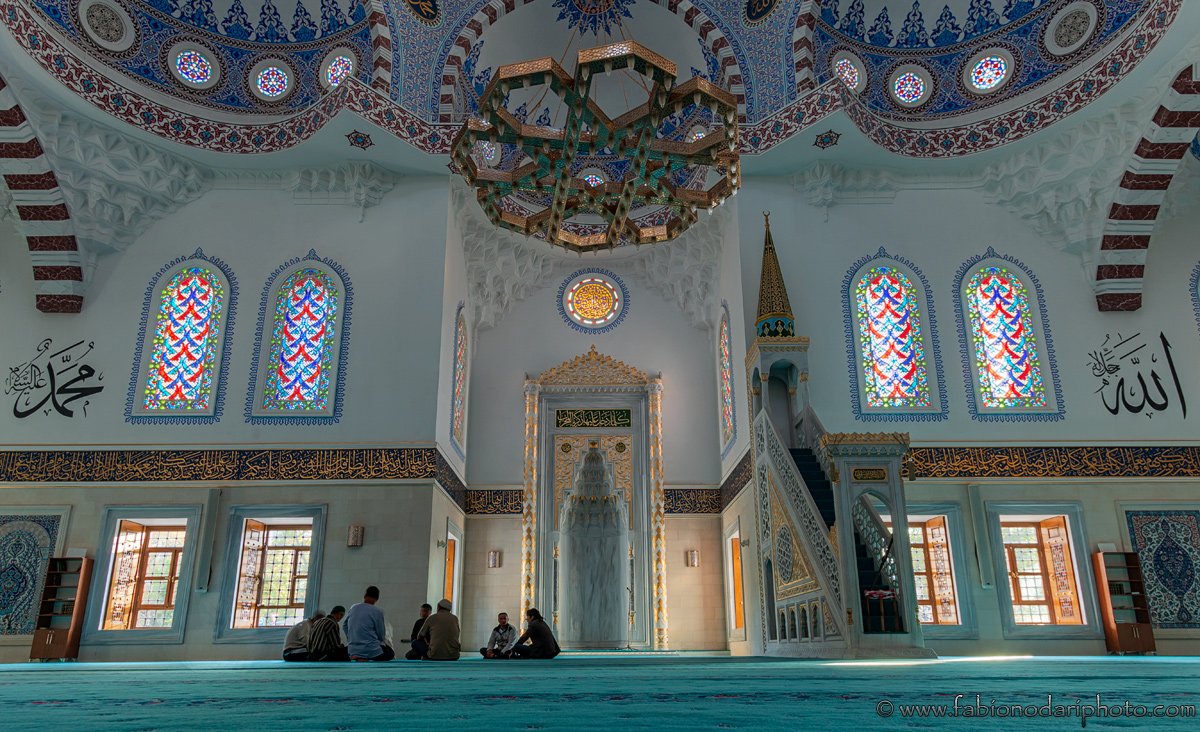
After a few days exploring Southeast Kazakhstan, I crossed the border in Karkara and spent the second part of my trip to Central Asia discovering Kyrgyzstan. Crossing the border is simple, and since it’s quite a remote area, it doesn’t take long.
Kyrgyzstan is one of those countries we almost never hear about. However, it’s an incredibly beautiful destination you should include in your bucket list.
What are some of the most unique things you can do and see in Kyrgyzstan? Here are some ideas for your trip to Central Asia.
What to do in Kyrgyzstan
A visit to San-Tash
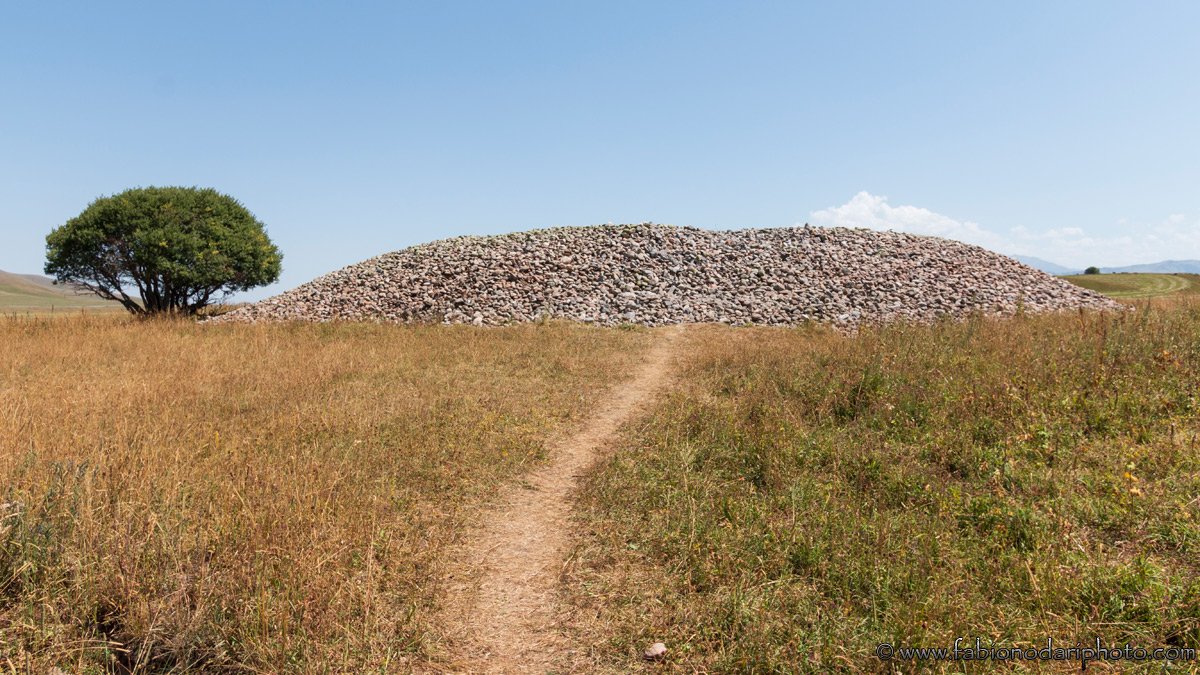
About 20 Km after crossing the border with Kazakhstan, you’ll come across San Tash. There are many legends associated with this archaeological site.
According to one of them, the large pile of thousands of rocks dates back to the Timurid era. En route to an invasion of China, the conqueror instructed his soldiers to each place one stone from Issyk-Köl Lake into the mound. Upon returning victorious from the battle, each soldier removed one stone again, allowing Timur to estimate his battle losses.
Drinking horse milk
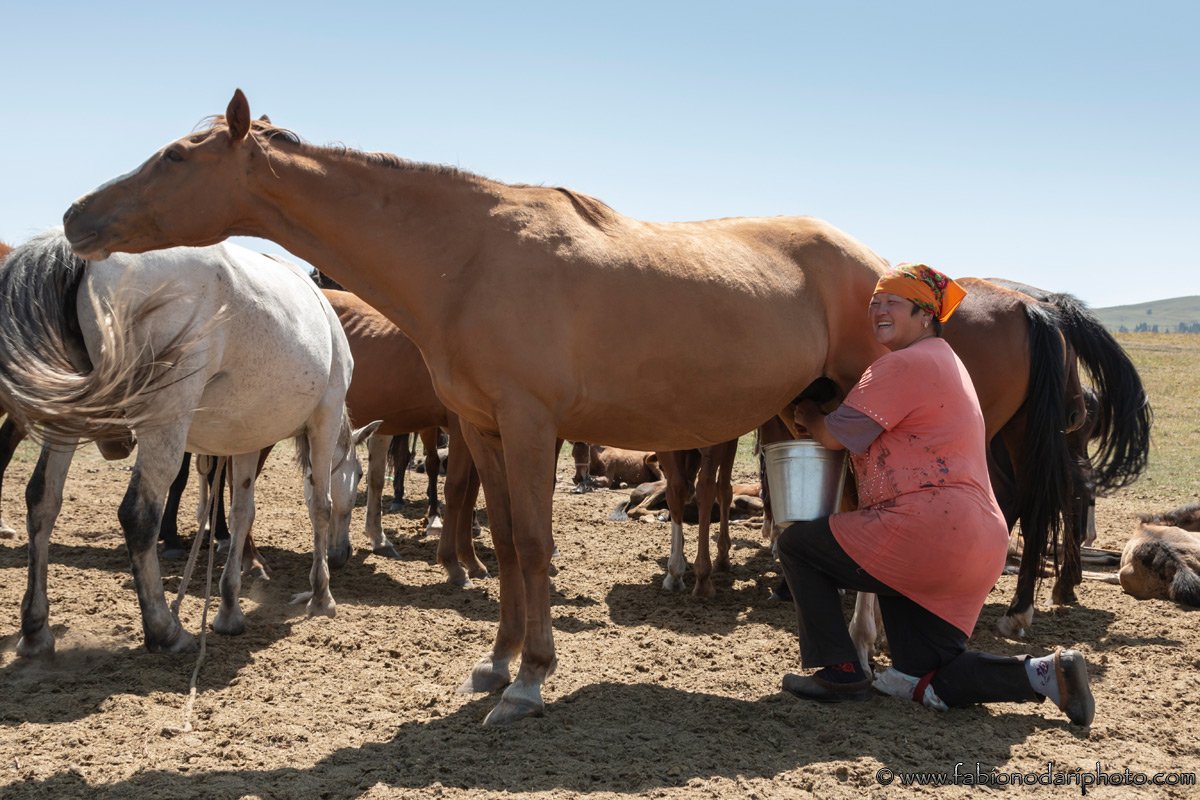
In ancient times, horse milk was the first thing you should offer your guests if you were a Nomad in Kyrgyzstan.
I’m not gonna lie: it tastes bad. However, you should at least try it once. Horse milk tastes like sour cream and bacon; since it’s fermented, it’s slightly alcoholic. It’s one of those things you must acquire a taste for since you were a kid, like blue cheese, stinky tofu, or durian.
To prove that I’m not exaggerating, remember that fermented horse milk has been included in the Disgusting Food Museum in Stockholm.
Kyrgyzstan for foodies: Ashlan-fu
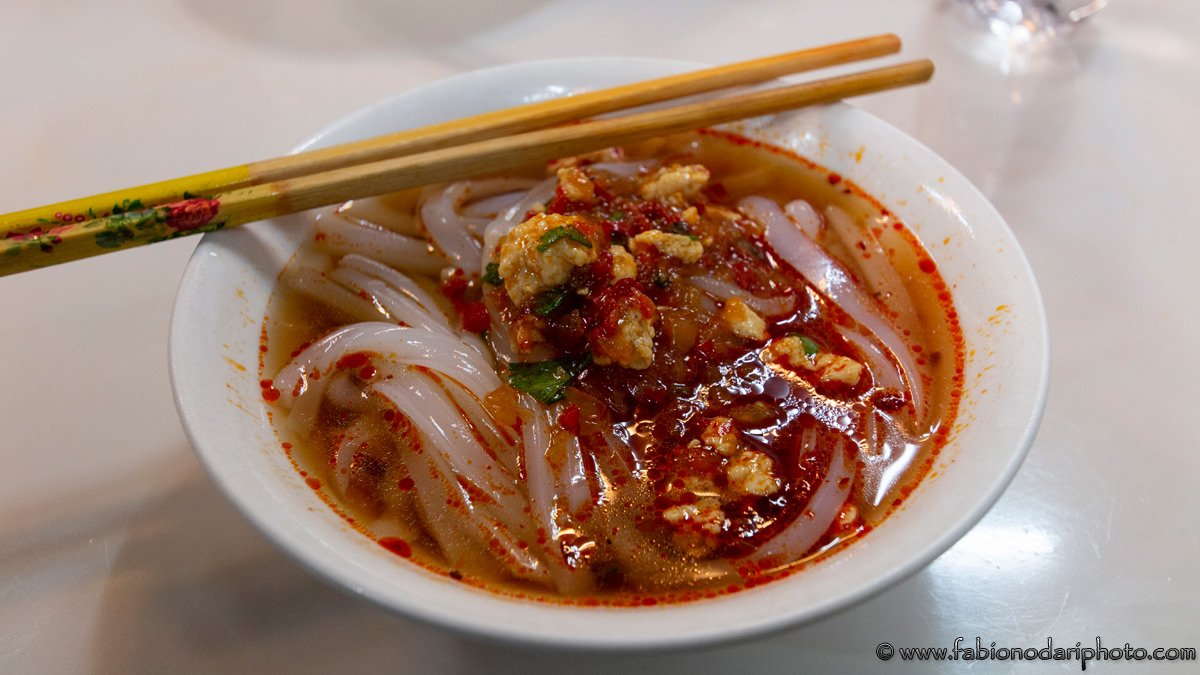
Fortunately, there are some delicious dishes to try in Kyrgyzstan, and Ashlan-fu is one of them. This is one of Karakol’s Signature Dishes. It’s a dish from the Dungan ethnic group (a Muslim minority from Xinjiang, China). It’s a slightly spicy, cold soup made with two kinds of noodles — thick rice noodles and thinner wheat noodles — mixed with vinegar chilli sauce and chopped herbs. It usually comes with piroshki (fried bread stuffed with potatoes).
The best place to try Ashlan-fu is in Karakol’s Small Bazaar. You can find more info about the food you can try in Karakol on this website. Another thing you should try is my favourite dish in Central Asia: Laghman, a Central Asia version of the Chinese pull noodles also called Lamian (拉面).
Dungan Mosque in Karakol
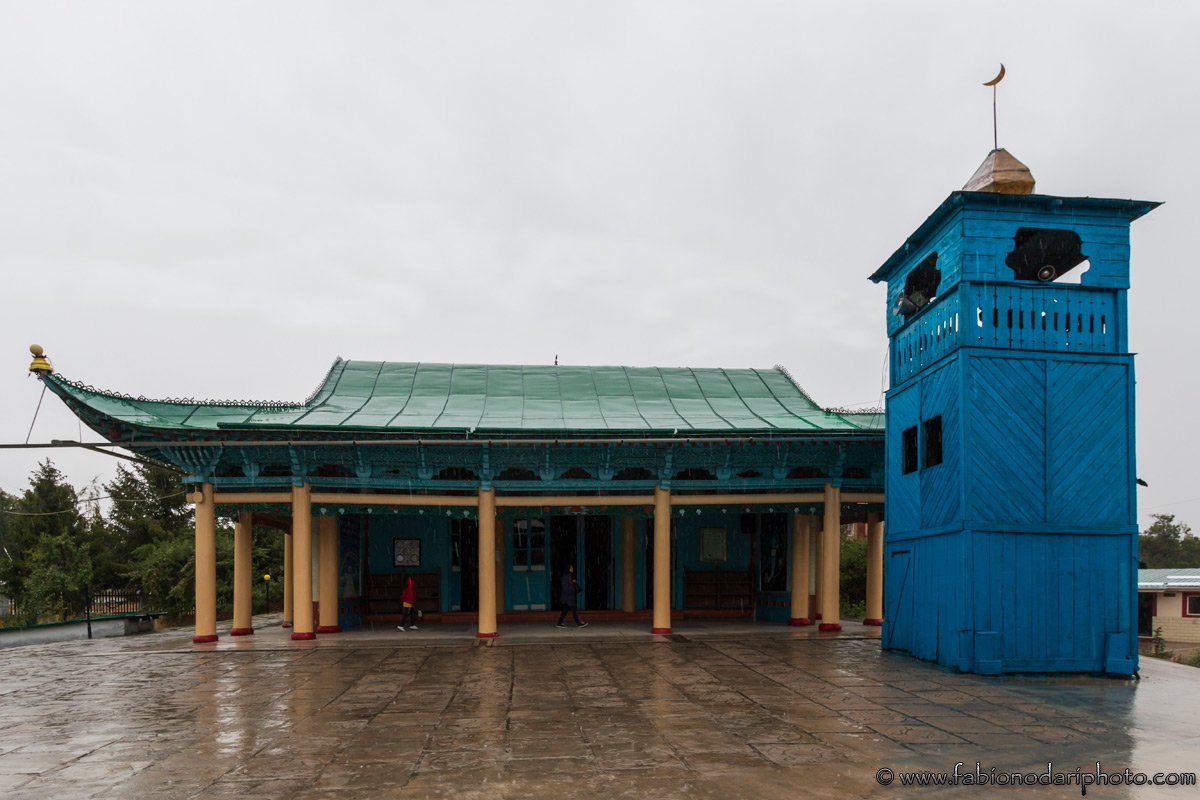
Karakol’s population increased in the late 19th century due to an influx of Dungans (Chinese Muslims) fleeing warfare in China. They brought their culture with them to Kyrgyzstan, and in 1910, a mosque was built to serve the community of Dungans. Some things that make this building unique are that it is constructed entirely without nails, and much of its imagery, including a wheel of fire, reflects the Dungans’ pre-Islamic, Buddhist past. Furthermore, instead of a minaret, the mosque has a wooden pagoda.
All colours represent different Dungan cultural concepts: red protects from evil spirits, yellow contributes to the accumulation of wealth and brings prosperity, and green symbolizes happiness. Unless you know the culture and history behind it, it’s probably one of those buildings that doesn’t stand out, but I find it fascinating. In all the years I’ve spent in China, I’ve never seen this type of mosque.
Camping in Issyk-kul lake
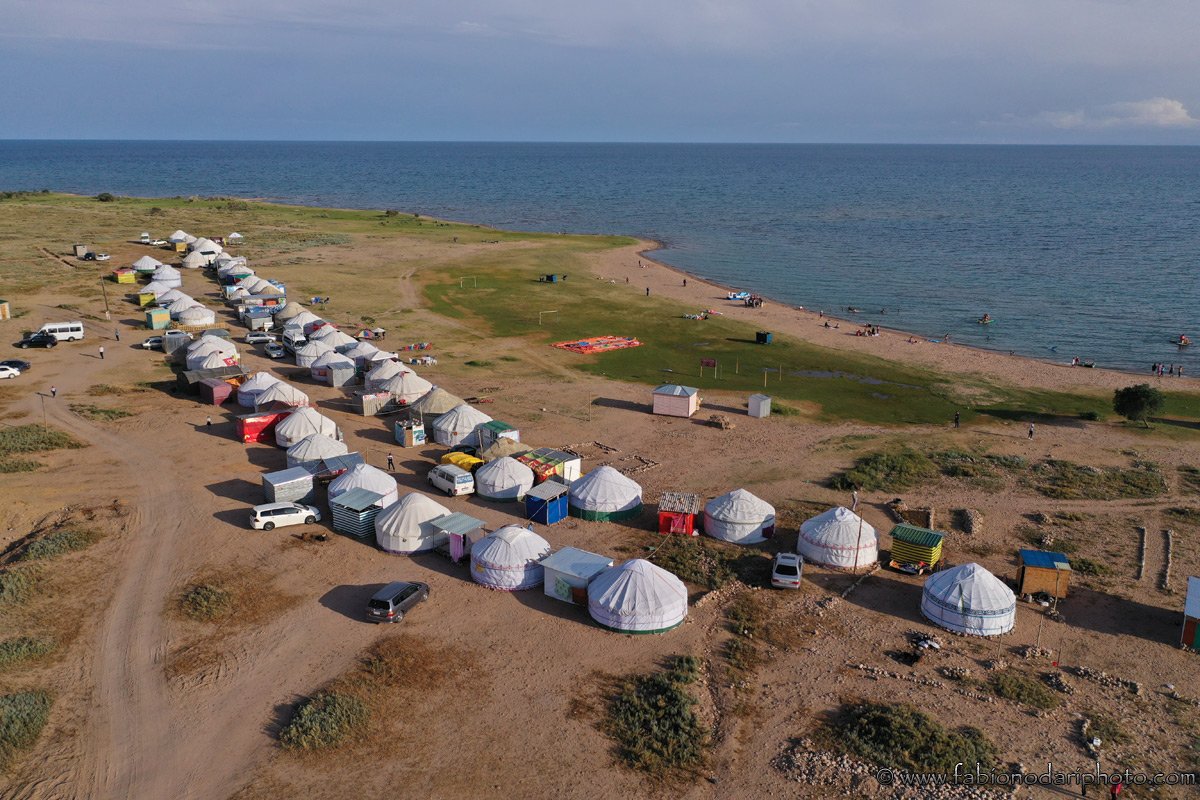
Issyk-Kul is a lake in the northern Tian Shan mountains in eastern Kyrgyzstan. According to Wikipedia, “It’s the seventh deepest lake in the world, the tenth-largest lake in the world by volume (though not in surface area), and the second-largest saline lake after the Caspian Sea. Issyk-Kul means “warm lake” in the Kyrgyz language; although snow-capped peaks surround it, it never freezes.”
It’s a huge lake and a summer holiday retreat for Kyrgyz people. One interesting thing you can do is camping in a yurt on the shores of the lake.
Camping in a yurt
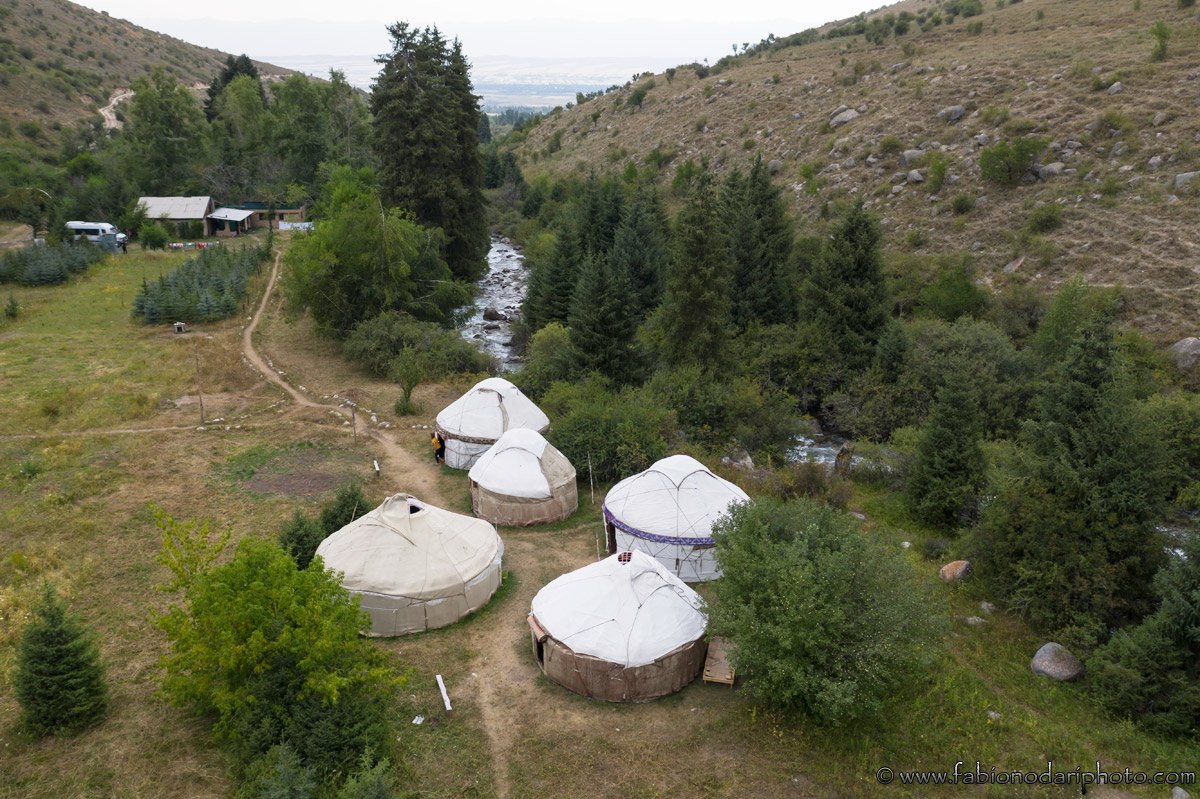
One of the first things that come to mind when you think about a trip to Central Asia is spending a few nights in a yurt. There are plenty of places in Kyrgyzstan to spend a few days with a local family in their yurts. Some are quite remote and difficult to find (you need a local tour company to book the yurt), while others (like in Issyk-Kul) are very accessible.
If you visit Kyrgyzstan, staying in a yurt is a must. Don’t expect any comfort though: some camps don’t have electricity (definitely don’t expect any WI-FI signal), the toilet is just a hole in the ground and, especially in the mountains, it gets quite cold even during the summer.
Enjoy the incredible landscapes
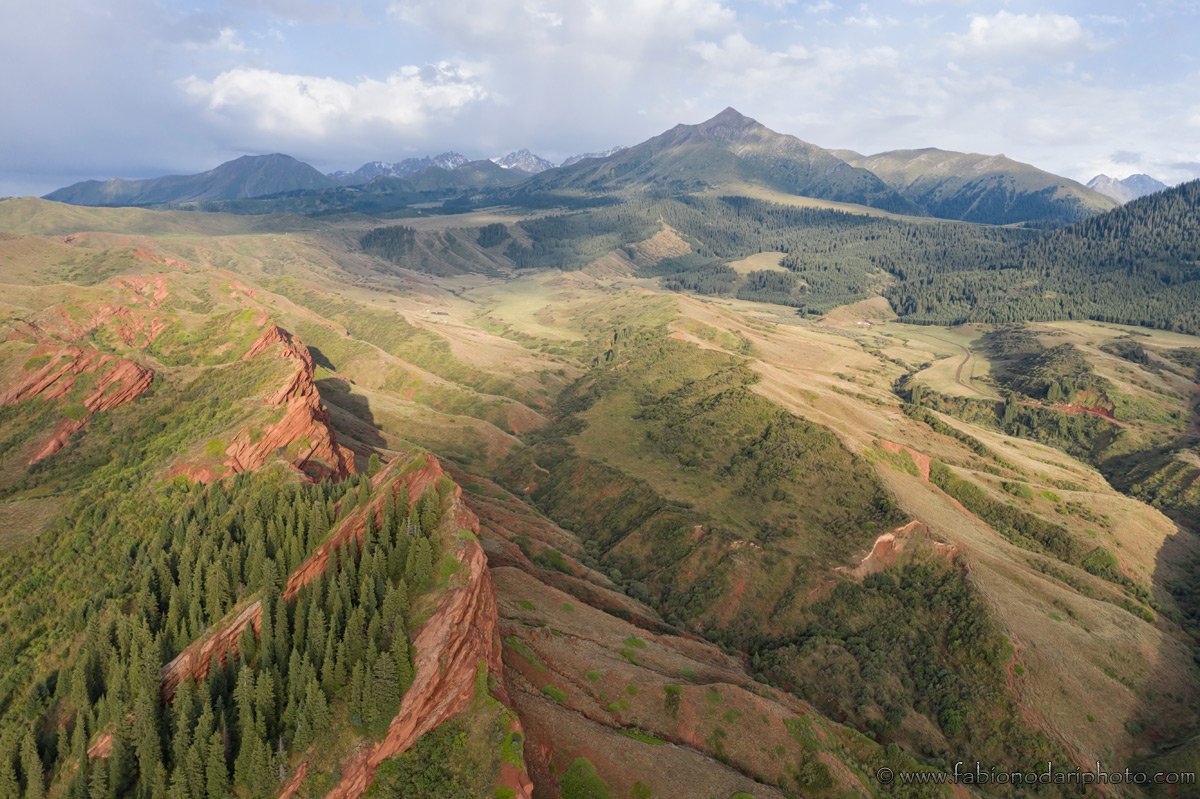
In Kyrgyzstan, you’ll find some pretty sick views. Be ready to hike a lot, but you’ll eventually be rewarded with amazing landscapes. Unfortunately, it rained a lot during my trip, so I had to skip a few destinations, but I’ve seen pictures of incredible places with absolutely zero tourists.
Kyrgyzstan is a country to explore, with many possibilities for any landscape photographer.
Seeing a Snow Leopard
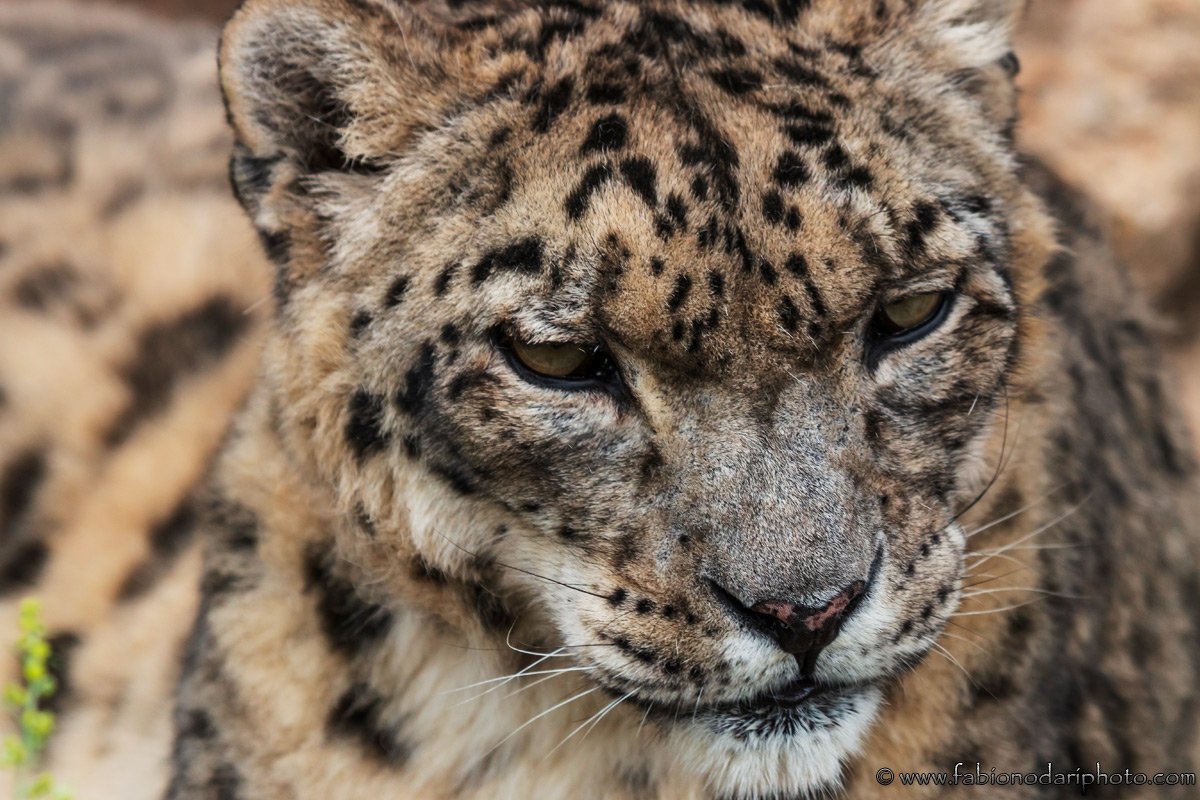
The first time I saw a Snow Leopard was in China, and it was an incredible experience but also quite extreme. We had to camp at an altitude of 4300 meters (in winter), which was quite tough. If that’s too much for you, you can visit the NABU Snow Leopard Reserve, where, at the moment, there are 2 Snow Leopards.
Finding the camp is quite difficult, and you must book the visit before going there. I suggest you contact the NABU center to ask for more information. The Snow Leopards are kept inside a big enclosure and are not free to leave. One cat lost part of his leg due to poaching and would die quickly if released in the wild since it’s not able to hunt. The second Snow Leopard was born in captivity.
There are about 300 Snow Leopards in the country, but the number is declining due to poaching and loss of natural habitat. The NABU centre is part of a German project entirely sponsored by the German Government.
Explore Bishkek
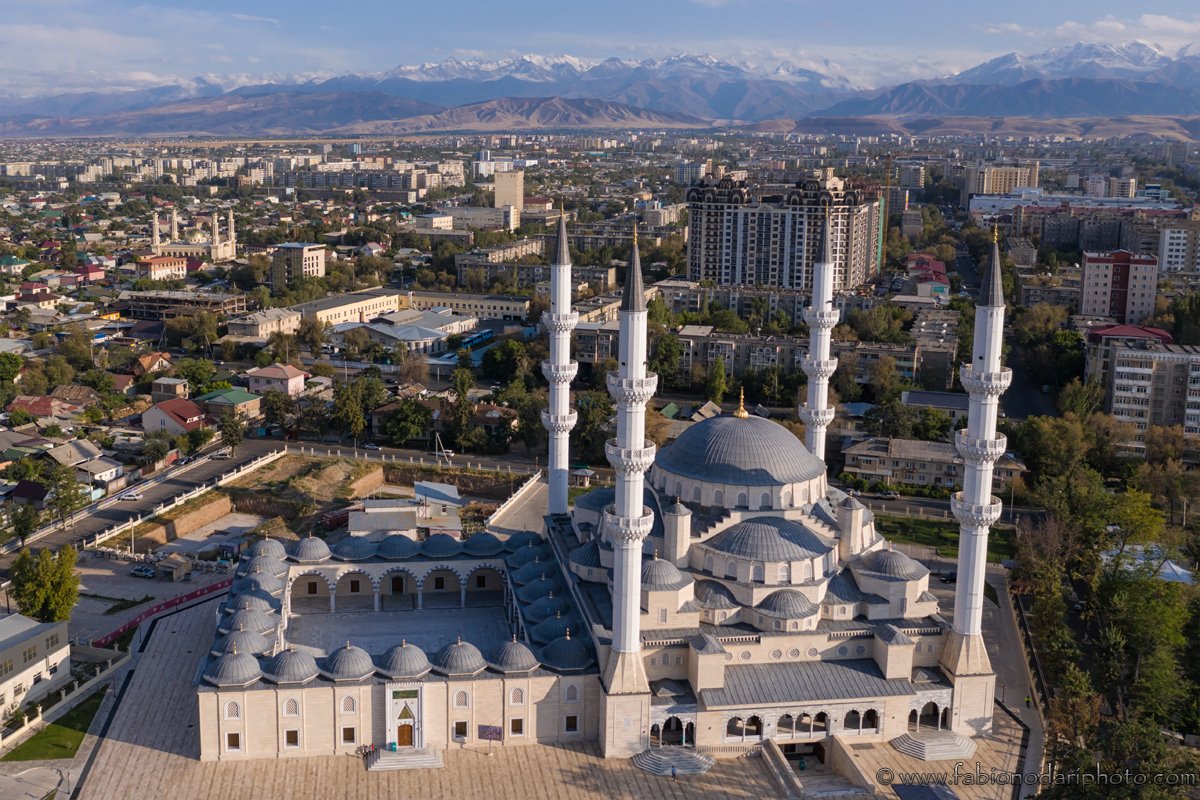
Bishkek is the capital of Kyrgyzstan and, even though it is not as developed as Almaty (the other city I visited during the trip in Kazakhstan and Kyrgyzstan) is an interesting place to explore.
There are two new mosques, and it’s cool to see the contrast between soviet architecture and the religious buildings.
Useful info about Kyrgyzstan
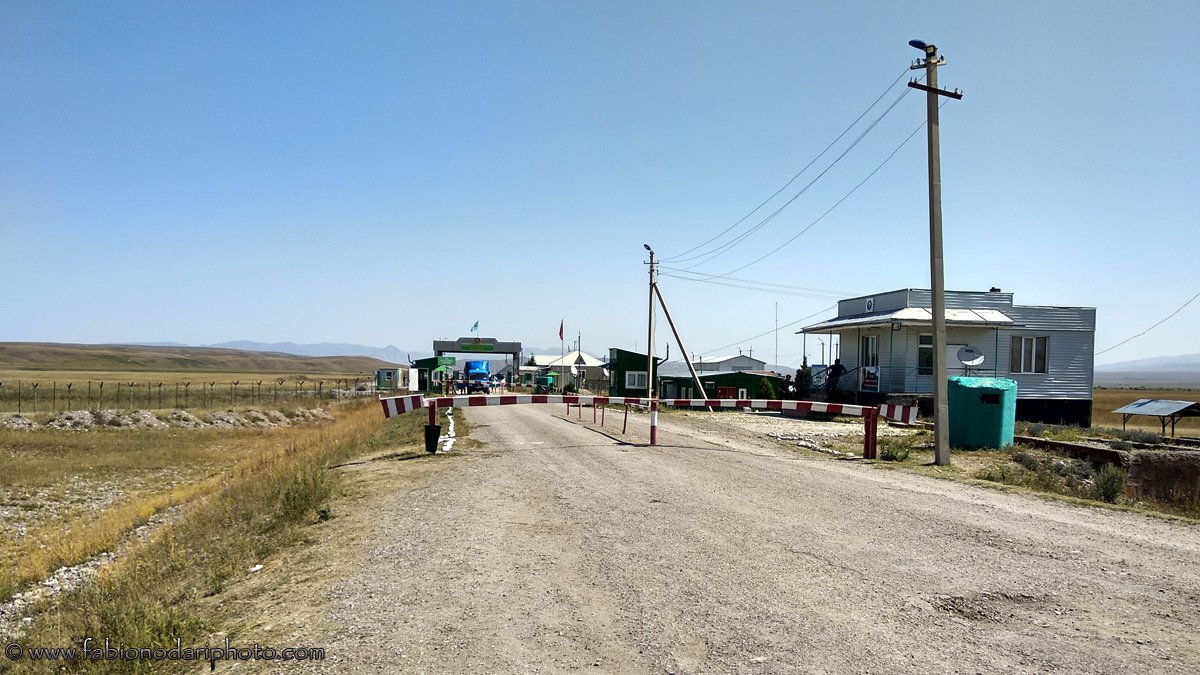
- It’s possible to arrange a trip without any tour operator. However, you might consider hiring a local driver to get you to the most remote places. Most yurt camps are so isolated that only local people know about them.
- Kyrgyzstan is the most democratic of all the Central Asian countries, and occasionally, protests are in some of its major cities. This doesn’t mean that it’s not a safe country. During my trip, I met a lot of solo travellers (males and females).
- Unlike Kazakhstan, Kyrgyzstan doesn’t have many natural resources, and generally speaking, the country is not as developed as its gigantic neighbour. Even in Bishkek’s capital, you’ll find plenty of unpaved roads. The only abundant resource is water; I believe this might play an important role in the country’s future development.
- The majestic Tien Shan (Heavenly Mountains) range occupies the greater part of the area, and 90% of the country stands above 1.500m, with 71% above 2.000m. So even in summer, it can be quite cold, especially cloudy.
- Holders of passports from 69 different countries (including most European countries, the United States, Canada, and Australia) are not required to obtain a Visa for up to 60 days. You can find more info here. So you might want to consider including these two countries in your itinerary.
Here, you can find some other pictures I took in Kyrgyzstan. Here is a list of the top things to do and to see in Jordan.
Watch the video from my trip to Kazakhstan and Kyrgyzstan in 4K.
DISCLAIMER: This publication is made possible by the support of the American People through the United States Agency for International Development (USAID) Competitiveness, Trade, and Jobs Activity in Central Asia. The contents of this publication are the sole responsibility of Fabio Nodari and do not necessarily reflect the views of USAID or the United States Government.
